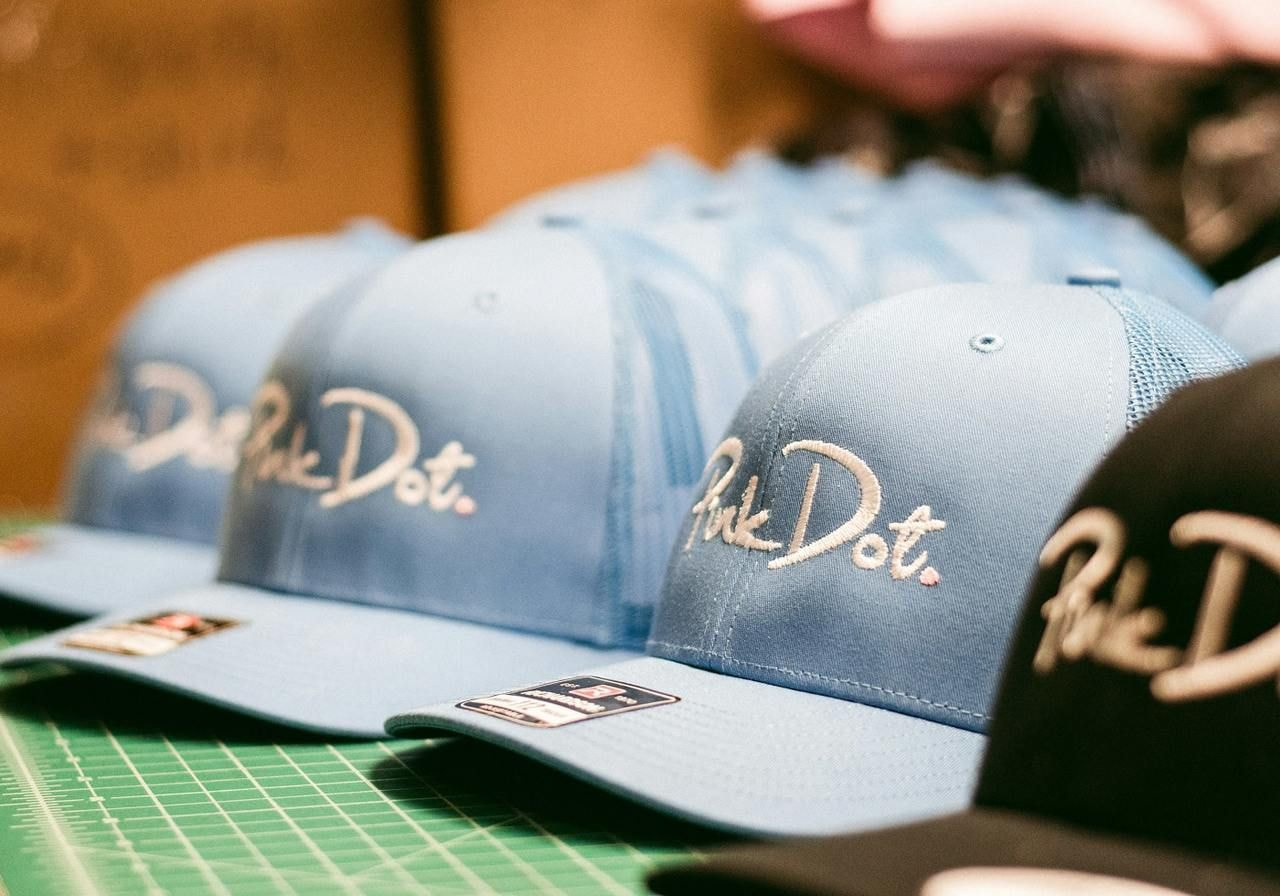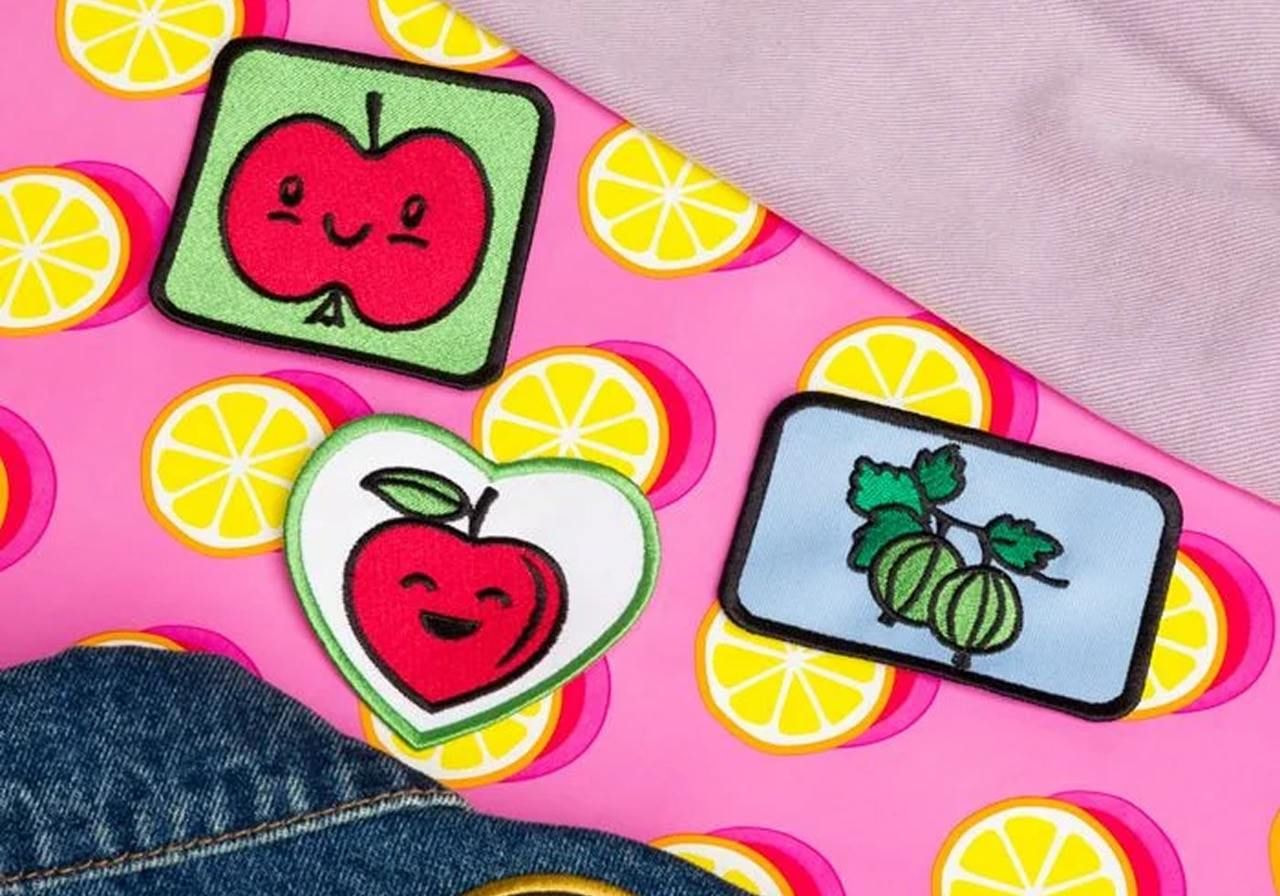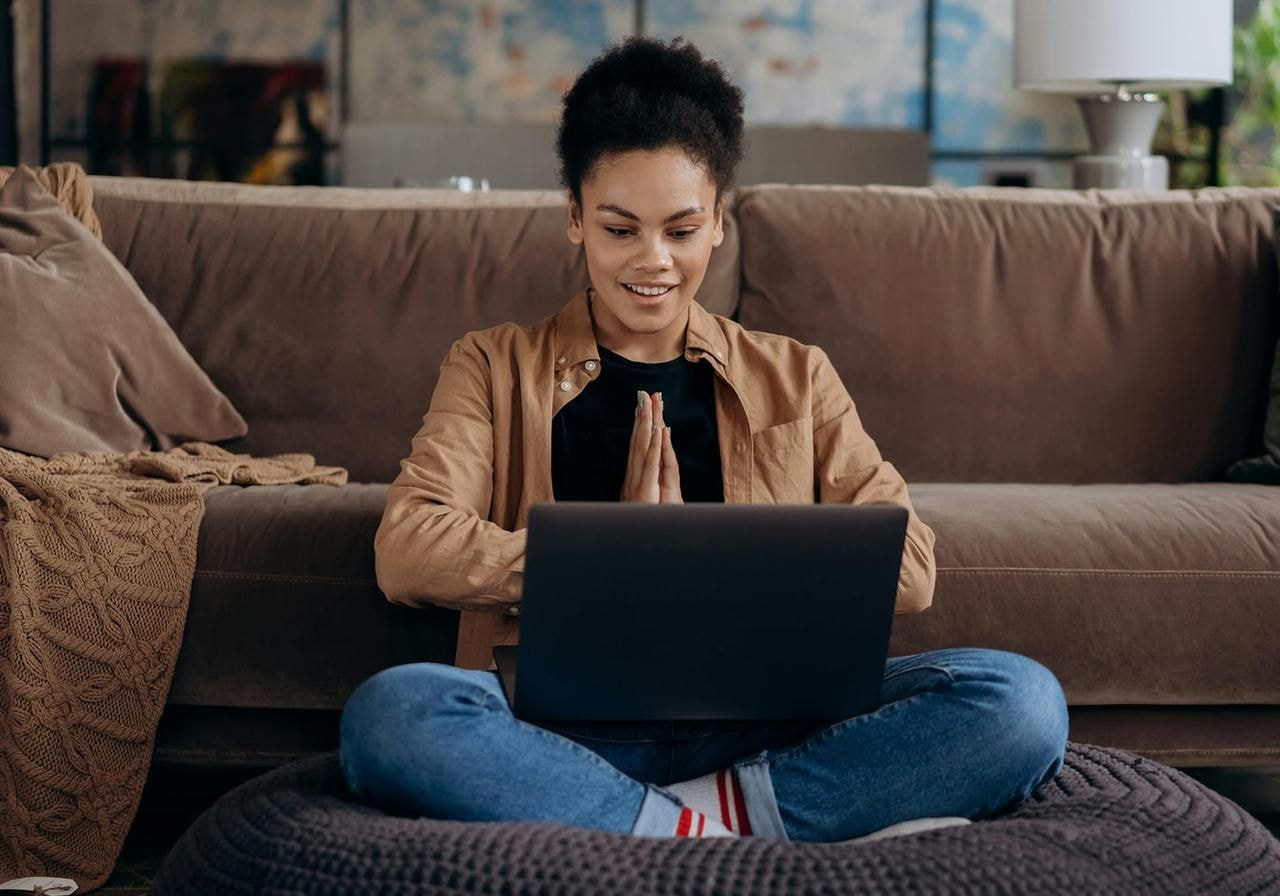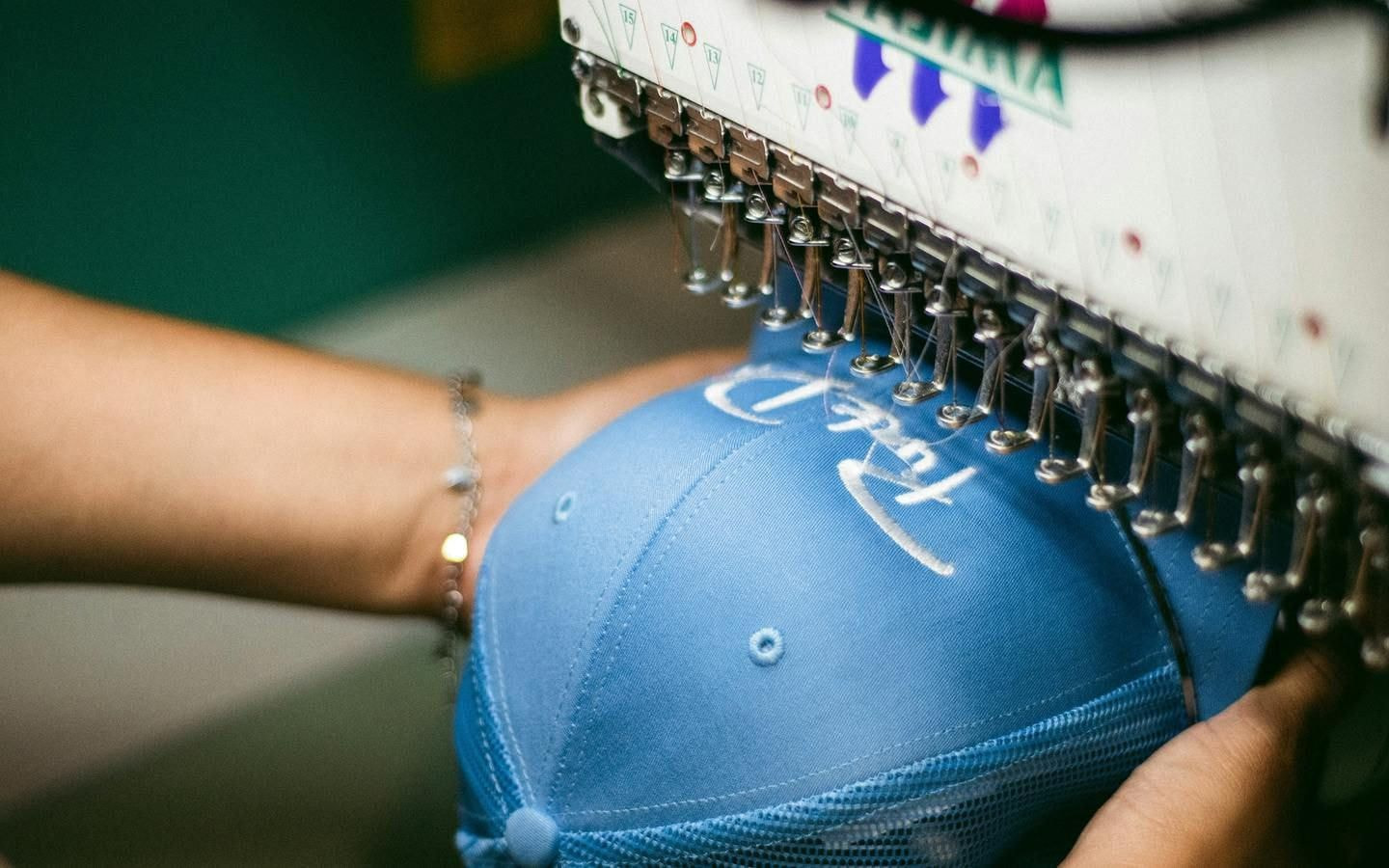Table of contents
Thinking of starting an embroidery business in 2025? You’re not alone. With consumers craving personalized, high-quality apparel, launching an embroidery business is a smart way to tap into a profitable and creative niche.
But standing out in today’s competitive market takes more than just great designs.
This guide breaks down everything you need to know—from setting up to building your brand and finding your ideal customers. Whether it’s a side hustle or a full-time venture, here’s how to launch your embroidery business the right way.
1. Define a niche
A niche is a focused area within a larger market that caters to a specific group of people with particular needs, interests, or preferences.
Choosing a niche is especially important when starting your own embroidery business. It helps you stand out and attract potential customers who are searching for unique, personalized designs they can’t find from generic apparel brands.
Learn how to find your perfect niche.
Selecting a niche also helps you make informed decisions when planning:
-
Products and designs
-
Brand appearance and voice
-
Main marketing channels
Take, for example, The Philosopher’s Shirt. Since 2016, the brand has built a following with thought-provoking merch. The store resonates with fans of witty wordplay, clever quotes, and smart graphic tees inspired by famous philosophers.
To figure out what kind of niche and customer demographic best suits your embroidery business, answer the following questions:
-
What are your passions and interests?
-
What values, aesthetics, or lifestyles does your ideal customer connect with?
-
What gaps in the market could your embroidery business solve?
-
What existing embroidery businesses do you like and why?
-
What current embroidery trends can you include in your designs?
Doing market research helps you spot untapped opportunities in the embroidery industry, uncover high-demand niches, and connect more effectively with your target market.
To learn more about running your own branded business, look at our step-by-step guide to starting a clothing brand.


2. Decide how to fulfill orders

Love the look of embroidery but don’t have the time or embroidery skills to craft pieces yourself? Outsource manufacturing to a supplier offering professional embroidery services.
Buy your embroidered products in bulk and ship them to customers, or use on-demand production and fulfillment to handle the entire process, like with Printful.
Here are a few ways to build your custom embroidery business.
Outsourcing production and order fulfillment
Partnering with a print-on-demand company like Printful is a great way to start an embroidery business.
With on-demand fulfillment, we only produce and ship items once your customer orders—that means no financial risk as you don’t have to buy equipment or stock upfront.
Plus, adding new designs and products to your online store is easy with our vast embroidery collection. Test as many ideas as you’d like and focus on the ones that perform well.
What to consider when getting started
Here are a few things you should consider when starting your own custom embroidery business using on-demand production and fulfillment.
-
Online store integrations. Check if your sales channel (like Shopify or Etsy) is compatible with your chosen on-demand provider.
-
Pricing. Our beginner’s guide on pricing your custom shirts explains how to set competitive rates for profit.
-
Check legal requirements. Take a look at our articles on how to start a business in the US and selling internationally to make sure you’re complying with regulations.
Want to try on-demand manufacturing but need help getting started? Use this free online checklist to build a business plan.
Creating and shipping orders yourself
If you’re interested in sewing your own pieces using hand or machine embroidery, you’ll need money upfront to start a home-based embroidery business.
Doing embroidery projects at home involves purchasing sewing equipment like single-needle machines, thread, and the products you’ll be embroidering. Multi-needle machines may be necessary for more intricate designs and to keep up with production.
Once orders start coming in, you’ll need to prepare, pack, and ship products yourself. That means managing your own inventory to avoid stockouts and providing excellent customer service in case of any order queries.
3. Pick what products you’ll embroider
When exploring how to start an embroidery business, finding the right products is key. Choose items that make sense with your designs and niche.
Embroidery also has different needs than printing—your products should balance durability, stitchability, and style. Here are some popular picks:
-
Caps and beanies are great for small logos or icons.
-
Hoodies and sweatshirts have thicker fabric that holds stitches well.
-
Tote bags and pouches are excellent canvases for crisp embroidery results.
-
Heavier tees are ideal for simple chest designs.
-
Home decor like pillowcases or tea towels make popular niche gifts.
Remember The Philosopher’s Shirt? The shop sells t-shirts, hoodies, and hats with funny memes and references to famous philosophers. Its laid-back, everyday apparel options fit right in with the brand’s witty, relaxed vibe.
Valuable read: Best-Selling Embroidery Items on Etsy—What’s Trending
Let’s look at the different custom embroidery options at Printful.
Read also: 25 Creative Embroidery Ideas
Apparel
Embroidered clothing is a great starting point when launching your custom apparel business. Here are some best-selling picks, from adult hoodies to baby onesies.
Adult apparel

Adult customized apparel provides ample room for large embroidery designs. Choose from hats, hoodies, t-shirts, pants, dresses, or leather jackets—anything your target audience is looking for.
Hats work well with large, embroidered lettering or a bold center design. They’re also worn year-round, making hats the perfect canvas for staying on-trend. Some small businesses even focus exclusively on headwear for high-quality embroidery.
Learn more about designing the perfect hat logo size and finding the best hats for embroidery on our blog.
Other embroidery businesses thrive selling custom hoodies and sweatshirts, which are popular due to their versatility. Stylish yet comfortable, add a high-quality embroidered design for your customers’ next go-to outfit. They’re also fantastic as personalized gifts.

You can always start with just one or two apparel products with various embroidery designs. This lets you focus on perfecting your designs and marketing before expanding your storefront.
Children’s apparel
Even with a smaller embroidery area, stitched designs give a charming, extra-special feel that elevates children’s apparel.
Parents don’t just want adorable outfits—they want ones that last. Worried about spills and messes? Embroidered clothing can handle these better than ink-printed designs, thanks to its durability.
Add playful, original embroidery and you’re not just selling kids’ clothes—you’re solving feeding-time problems in style.
Home and living
This versatile product category for embroidery includes blankets, pillows, throws, napkins, and more. People love embroidered home goods because the products feel higher quality.
Put large custom designs on blankets or small, delicate designs on towels to make them look and feel more luxurious.
Beautifully embroidered home decor adds texture and personality to any space, which is why it continues to be a favorite among shoppers looking to elevate their interiors.
Need some ideas? Design a product line with a similar design theme. For example, offer a bedroom set with floral embroidery designs. Encourage purchases and upsell with bundle discounts for customers who buy multiple items from the same collection.
Patches

Patches are a great entry point when you start an embroidery business—they’re small, easy to produce, and ideal for testing new designs.
You can sell them individually or as add-ons, attracting different types of potential customers. They’re perfect for bundling with your core apparel pieces like sweatshirts or backpacks.
4. Create your custom embroidery products
Now that you know what products to sell, it’s time to pair them with your custom embroidery designs.
Finalize the visuals that fit your embroidery business niche, then determine the colors and placement for each product.
Compile embroidery ideas

To help you identify embroidery design ideas that sell, answer these questions:
-
What creative designs come to mind when you think of your niche market?
-
What’s popular in the embroidery industry now that your target audience would love?
-
What designs do you notice competitors offering?
Take screenshots, save images, or sketch whatever comes to mind. Use Pinterest or a scrapbook to compile your ideas for embroidery projects.
If you need inspiration, check out this list of embroidery ideas that sell and pick designs that match your aesthetic.
Remember—don’t directly copy other people’s designs. Avoid violating copyright laws by innovating and improving design ideas or developing original concepts for your custom clothing brand.
Figure out the embroidery placement
Get strategic with your embroidery placement. The same design can look completely different depending on the product—what pops on a t-shirt might fall flat on a hat. Consider the size, texture, and color of each item to make your designs shine.
If you’re working with a print-on-demand provider like Printful, make sure your designs fit the embroidery software file requirements. Check out this handy guide for embroidery design file tips.
Before the machine embroidery process can begin, our graphic design team will convert your file into a format that our embroidery machines can read—this is called digitization.

Note that there’s a one-time digitization fee for each new design. To avoid any hiccups, make sure to read our Acceptable Content Guidelines.
Types of embroidery
Once you know what kind of embroidered designs you want, explore the different embroidery techniques available.
Printful embroidery machines support various styles and stitch types like flat embroidery, 3D puff, satin stitch, run stitch, and tatami fill. To learn more about the different stitching techniques, check out our embroidery tutorial for beginners.
Flat embroidery is a common technique in which stitches are kept flat on the product’s surface, while 3D puff embroidery creates a raised look that’s best suited for larger shapes.
When it comes to stitch types, the run stitch is a go-to for small details, allowing for more design variety. It’s a simple, single-line stitch that complements other embroidery types.


Use the tatami fill (or rows of run stitches) for large areas. It cleanly embroiders threads across the surface without leaving any empty spots.
Another option is the satin stitch. It’s a long, straight embroidery stitch used to outline an object or cap a 3D puff design. It’s an excellent technique for adding shadow to 3D puff embroidery.
Our digitizers will recommend the stitch types that work best for each design, so make sure to follow our guidelines—your graphic will ultimately determine what works best.
Unlimited color embroidery
In the past, custom embroidery meant limited color options, depending on the available threads and embroidery machine limitations. But Printful’s latest feature, unlimited color embroidery, is changing the game for custom embroidered clothing.
This innovative technique uses a white thread that’s dyed during the embroidery process, creating vibrant, multi-color designs without color limitations.
Thanks to the vast color palette, it’s ideal for bringing complex designs to life, including those with intricate gradients and shades.
For more information on choosing products and designs for your embroidery business, check out our article on getting started with custom embroidery. And don’t miss the video below on how to create your designs with Printful’s Design Maker.


5. Open an online store for your embroidered products

You’ve got your niche, your products, and your designs—now it’s time to sell. One of the easiest ways to start a successful business is to launch a print-on-demand store using Printful’s embroidery services.
Here’s the process:
-
Pick your platform. Choose where you want to sell. Popular options include Shopify for full control and branding, and Etsy for handmade and niche audiences.
-
Sign up with Printful. Register for free and let us handle production, packing, and shipping for every order—no inventory needed.
-
Connect your store. Link your store to Printful with just a few clicks. This automates the entire fulfillment process, from order to shipment.
-
Add designs to products. Use our Design Maker to create your embroidered pieces. Upload your visuals and place them on hats, hoodies, totes—whatever fits your brand.
-
Polish your listings. Use high-quality mockups, write clear and catchy product descriptions, and highlight embroidery as a premium feature.
-
Set pricing. Factor in product costs, embroidery fees, and shipping. Aim for healthy profit margins, then set your payment and shipping methods.
-
Go live and start selling. Hit publish and share your store link on socials, in emails, or wherever your audience hangs out. Every order is automatically sent to Printful, so you can focus on building your brand while we handle the rest.
Learn more about store setup and linking your site by checking out this article on how to start an online store with Printful.
Pro tip: Order a few samples to test embroidery quality and use them to create stunning product photos and social content.
6. Start marketing your custom embroidery business

Now that your embroidery products are ready, it’s time to score your first sale.
The key is visibility. Marketing efforts for your embroidery business should start with identifying where your target audience spends time online.
If they’re younger, try short-form video content on TikTok or Instagram Reels. If they’re professionals or parents, Pinterest or Facebook might work better.
For niche exposure, use hashtags that speak to your target market—think #BridesmaidGifts or #CottagecoreStyle, not just #embroidery.
Study your competitors. What platforms are they active on? What type of content gets engagement on different social media channels?
You can also meet potential customers at networking events, local pop-ups, or craft fairs. Even if you’re selling online, these spaces provide an excellent opportunity to get your brand out there.
Some tactics that give embroidery sellers an edge:
-
Use Google Trends and search engines to find what people are looking for right now (like “embroidered baby name hat”).
-
Build an email list by offering care tips, downloadable styling inspiration, or early access to exclusive drops.
-
Order samples and record unboxings to create shareable content for social media.
-
Try paid advertising, but start small. Test a few variations on different platforms and see what works.
Once you start getting orders, encourage buyers to leave reviews. Customer testimonials play a huge part for small businesses to gain traction.
Marketing your embroidery business might feel daunting in the early stages, but these efforts lay the groundwork for long-term success as your business grows.
Learn more: Effective Ways to Market a Product
Ready to enter the embroidery market?
Now that you’ve learned how to start an embroidery business—from picking a niche to launching your marketing strategy—you’re ready to carve out your place in the growing embroidery market.
Whether using machine embroidery or partnering with an on-demand service like Printful, the path forward starts with a solid business plan and great designs.
Keep this guide close as your brand grows, and check out the Printful blog for tips on design trends, marketing, and how to start embroidery right. The key to running your business successfully? Stay consistent and let your creativity shine.
FAQs
Yes, embroidery is absolutely profitable—especially if you approach it with the right tools, niche, and strategy. Profit margins are strong since embroidery adds perceived value to everyday products.
Whether you’re selling apparel, accessories, or home goods, success comes down to smart product selection, standout designs, and effective marketing that speaks to your target audience.
The startup cost depends on your approach.
If you’re doing it yourself, you’ll need to invest in an embroidery machine, materials, and potentially a single-needle or multi-needle setup. That can cost anywhere from a few hundred to several thousand dollars. You’ll also need digitizing tools and a workspace.
Alternatively, you can use embroidery services from a print-on-demand provider like Printful. This option requires little to no upfront cost and helps you save time on production, inventory, and shipping, making it ideal for those just starting out.
To start an embroidery business, you’ll need a product sourcing strategy, design tools, and a way to sell online.
DIY sellers need equipment like an embroidery machine, threads, and embroidery software to digitize designs. You’ll also need packaging supplies and space to store products.
If you’re using a POD model, you only need a Printful account and an ecommerce store. Printful handles the embroidery, fulfillment, and shipping, so you can focus on marketing and growing your brand.
In both cases, you’ll need to set up shop on online marketplaces or ecommerce platforms to reach customers.
The best-selling embroidery products vary based on your target market, but items like hats, hoodies, baby clothes, and home decor often perform well.
Personalized or niche-specific products like bridal party gifts, pet apparel, or motivational designs also appeal to many customers.
Before selecting a product, do thorough market research. Look at what’s trending on Etsy and social media and research seasonal buying habits. If you’re new to the industry, this is key to knowing how to start an embroidery business that gets noticed.



By Sarah Reilly
Sarah is a Senior Content Writer at Printful with experience in editing, translation, and teaching. She holds a Ph.D. in International Relations and is passionate about language.





